Blog
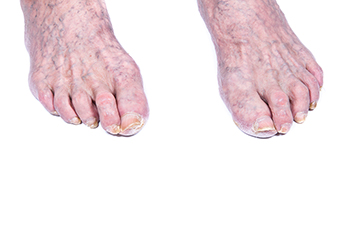
Maintaining good foot health is essential for seniors to ensure mobility and overall well-being. Regular foot care includes keeping feet clean and dry, which helps prevent infections. Moisturizing daily can prevent dry, cracked skin, while avoiding areas between the toes to reduce fungal growth. Wearing well-fitted, supportive shoes can prevent discomfort and reduce the risk of falls. It is also important to inspect feet regularly for any changes such as sores, redness, or swelling, and to address issues promptly. Trimming toenails straight across helps prevent ingrown nails, while gentle foot exercises can improve circulation and flexibility. Consulting a podiatrist for any persistent foot problems ensures appropriate treatment and care. If you have foot pain or are caring for an elderly person, it is suggested that you confer with this type of doctor who can effectively offer relief options, in addition to individualized foot care tips.
Proper foot care is something many older adults forget to consider. If you have any concerns about your feet and ankles, contact one of our podiatrists from Carolina Foot & Ankle Specialists. Our doctors can provide the care you need to keep you pain-free and on your feet.
The Elderly and Their Feet
As we age we start to notice many changes in our body, but the elder population may not notice them right away. Medical conditions may prevent the elderly to take notice of their foot health right away. Poor vision is a lead contributor to not taking action for the elderly.
Common Conditions
- Neuropathy – can reduce feeling in the feet and can hide many life-threatening medical conditions.
- Reduced flexibility – prevents the ability of proper toenail trimming, and foot cleaning. If left untreated, it may lead to further medical issues.
- Foot sores – amongst the older population can be serious before they are discovered. Some of the problematic conditions they may face are:
- Gouging toenails affecting nearby toe
- Shoes that don’t fit properly
- Pressure sores
- Loss of circulation in legs & feet
- Edema & swelling of feet and ankles
Susceptible Infections
Diabetes and poor circulation can cause general loss of sensitivity over the years, turning a simple cut into a serious issue.
If you have any questions please feel free to contact our offices located in Mount Pleasant and Charleston, SC . We offer the newest diagnostic and treatment technologies for all your foot and ankle needs.
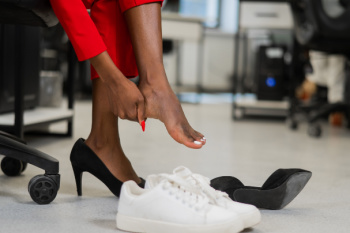 Heel pain can stem from various conditions. Plantar fasciitis, the inflammation of the thick band of tissue running along the bottom of the foot, often causes stabbing pain near the heel. Bursitis, an inflammation of the fluid-filled sacs cushioning the heel, can result from repetitive stress. Heel spurs, bony growths on the underside of the heel bone, may develop due to long-term strain on foot muscles and ligaments. A pump bump, or Haglund's deformity, is a bony enlargement on the back of the heel caused by pressure from footwear. Achilles tendonitis is inflammation of the Achilles tendon, typically due to overuse or tight calf muscles. Diagnosing heel pain involves having a physical exam, reviewing medical history, and sometimes undergoing imaging tests, such as X-rays or MRI scans. Treatment options include rest, stretching exercises, orthotics, and anti-inflammatory medications. If you have persistent heel pain, it is suggested that you schedule an appointment with a podiatrist for a proper diagnosis and treatment plan.
Heel pain can stem from various conditions. Plantar fasciitis, the inflammation of the thick band of tissue running along the bottom of the foot, often causes stabbing pain near the heel. Bursitis, an inflammation of the fluid-filled sacs cushioning the heel, can result from repetitive stress. Heel spurs, bony growths on the underside of the heel bone, may develop due to long-term strain on foot muscles and ligaments. A pump bump, or Haglund's deformity, is a bony enlargement on the back of the heel caused by pressure from footwear. Achilles tendonitis is inflammation of the Achilles tendon, typically due to overuse or tight calf muscles. Diagnosing heel pain involves having a physical exam, reviewing medical history, and sometimes undergoing imaging tests, such as X-rays or MRI scans. Treatment options include rest, stretching exercises, orthotics, and anti-inflammatory medications. If you have persistent heel pain, it is suggested that you schedule an appointment with a podiatrist for a proper diagnosis and treatment plan.
Many people suffer from bouts of heel pain. For more information, contact one of our podiatrists of Carolina Foot & Ankle Specialists. Our doctors can provide the care you need to keep you pain-free and on your feet.
Causes of Heel Pain
Heel pain is often associated with plantar fasciitis. The plantar fascia is a band of tissues that extends along the bottom of the foot. A rip or tear in this ligament can cause inflammation of the tissue.
Achilles tendonitis is another cause of heel pain. Inflammation of the Achilles tendon will cause pain from fractures and muscle tearing. Lack of flexibility is also another symptom.
Heel spurs are another cause of pain. When the tissues of the plantar fascia undergo a great deal of stress, it can lead to ligament separation from the heel bone, causing heel spurs.
Why Might Heel Pain Occur?
- Wearing ill-fitting shoes
- Wearing non-supportive shoes
- Weight change
- Excessive running
Treatments
Heel pain should be treated as soon as possible for immediate results. Keeping your feet in a stress-free environment will help. If you suffer from Achilles tendonitis or plantar fasciitis, applying ice will reduce the swelling. Stretching before an exercise like running will help the muscles. Using all these tips will help make heel pain a condition of the past.
If you have any questions please contact our offices located in Mount Pleasant and Charleston, SC . We offer the newest diagnostic and treatment technologies for all your foot and ankle needs.
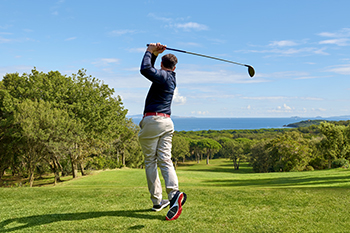
Golf, often perceived as a leisurely sport, can surprisingly pose risks of foot and ankle injuries, especially if proper precautions are neglected. One common cause of injuries is the repetitive motion of the golf swing, which can strain the muscles, tendons, and ligaments in the feet and ankles. Additionally, uneven terrain or poorly maintained golf courses can increase the risk of slips, twists, and falls, leading to sprains or fractures. To prevent foot and ankle injuries in golf, it is essential to prioritize proper warm-up exercises before hitting the course. Dynamic stretches targeting the lower body muscles can enhance flexibility and reduce the risk of strain during the swing. Wearing supportive golf shoes with ample cushioning and traction can provide stability and protect against injuries. It is also helpful to maintain good posture and technique while swinging can help distribute forces evenly across the body, minimizing stress on the feet and ankles. If you have endured a foot or ankle injury playing golf, it is suggested that you visit a podiatrist who can offer you treatment methods and injury prevention tips.
Ankle and foot injuries are common among athletes and in many sports. They can be caused by several problems and may be potentially serious. If you are feeling pain or think you were injured in a sporting event or when exercising, consult with one of our podiatrists from Carolina Foot & Ankle Specialists. Our doctors will assess your condition and provide you with quality foot and ankle treatment.
Common Injuries
The most common injuries that occur in sporting activities include:
- Achilles Tendonitis
- Achilles Tendon Rupture
- Ankle Sprains
- Broken Foot
- Plantar Fasciitis
- Stress Fractures
- Turf Toe
Symptoms
Symptoms vary depending upon the injury and in some cases, there may be no symptoms at all. However, in most cases, some form of symptom is experienced. Pain, aching, burning, bruising, tenderness, tightness or stiffness, sensation loss, difficulty moving, and swelling are the most common symptoms.
Treatment
Just as symptoms vary depending upon the injury, so do treatment options. A common treatment method is known as the RICE method. This method involves rest, applying ice, compression and elevating the afflicted foot or ankle. If the injury appears to be more serious, surgery might be required, such as arthroscopic or reconstructive surgery. Lastly, rehabilitation or therapy might be needed to gain full functionality in the afflicted area. Any discomfort experienced by an athlete must be evaluated by a licensed, reputable medical professional.
If you have any questions, please feel free to contact our offices located in Mount Pleasant and Charleston, SC . We offer the newest diagnostic and treatment technologies for all your foot care needs.
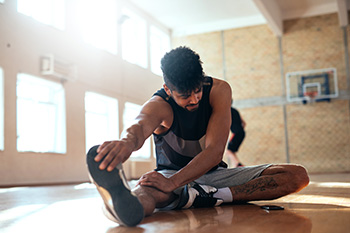
Strong ankles are vital for runners to maintain stability, prevent injuries, and enhance performance. Incorporating specific exercises into your routine can help strengthen the muscles, ligaments, and tendons surrounding the ankles. Simple exercises like calf raises, where you lift your heels off the ground and lower them back down, target the calf muscles and improve ankle stability. Ankle circles are done by rotating your ankles in both directions, which can help to improve flexibility and range of motion. Additionally, balance exercises, such as single-leg stands or using a balance board, can enhance proprioception and strengthen the ankle-stabilizing muscles. Strengthening exercises, such as toe curls and marble pickups, focus on the muscles of the foot and can contribute to overall ankle strength and stability. By incorporating these exercises into your regular training regimen, you can help reduce the risk of ankle injuries while enjoying the benefits of running for improved health and fitness. If you have an ankle injury, it is suggested that you consult a podiatrist who can treat this condition and offer you future running injury prevention tips.
All runners should take extra precaution when trying to avoid injury. If you have any concerns about your feet, contact one of our podiatrists of Carolina Foot & Ankle Specialists. Our doctors will treat your foot and ankle needs.
How to Prevent Running Injuries
There are a lot of mistakes a runner can make prior to a workout that can induce injury. A lot of athletes tend to overstretch before running, instead of saving those workouts for a post-run routine. Deep lunges and hand-to-toe hamstring pulls should be performed after a workout instead of during a warmup. Another common mistake is jumping into an intense routine before your body is physically prepared for it. You should try to ease your way into long-distance running instead of forcing yourself to rush into it.
More Tips for Preventing Injury
- Incorporate Strength Training into Workouts - This will help improve the body’s overall athleticism
- Improve and Maintain Your Flexibility – Stretching everyday will help improve overall performance
- “Warm Up” Before Running and “Cool Down” Afterward – A warm up of 5-10 minutes helps get rid of lactic acid in the muscles and prevents delayed muscle soreness
- Cross-Training is Crucial
- Wear Proper Running Shoes
- Have a Formal Gait Analysis – Poor biomechanics can easily cause injury
If you have any questions, please feel free to contact our offices located in Mount Pleasant and Charleston, SC . We offer the newest diagnostic and treatment technologies for all your foot care needs.
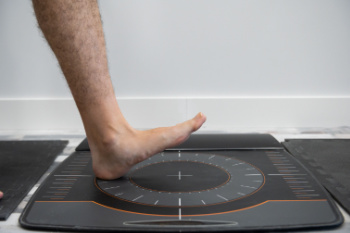
A gait assessment is a valuable tool used to analyze how a person walks or runs. It is typically performed to identify biomechanical issues, musculoskeletal imbalances, or abnormalities that may contribute to pain, discomfort, or reduced mobility. During a gait assessment, a podiatrist observes various aspects of the individual's walking or running pattern, including stride length, foot placement, and overall body alignment. Common abnormalities that may be detected include overpronation or excessive inward rolling of the foot, supination or outward rolling of the foot, leg length discrepancies, and asymmetrical gait patterns. Identifying these abnormalities through a gait assessment allows podiatrists to develop personalized treatment plans tailored to address the specific needs of the individual. This may include recommendations for footwear, custom orthotic devices, and exercises to improve strength and flexibility. If you would like to understand how your walking or running can be improved to lessen discomfort, it is suggested that you schedule an appointment with a podiatrist for an evaluation and gait assessment.
If you have any concerns about your feet, contact one of our podiatrists from Carolina Foot & Ankle Specialists. Our doctors can provide the care you need to keep you pain-free and on your feet.
Biomechanics in Podiatry
Podiatric biomechanics is a particular sector of specialty podiatry with licensed practitioners who are trained to diagnose and treat conditions affecting the foot, ankle and lower leg. Biomechanics deals with the forces that act against the body, causing an interference with the biological structures. It focuses on the movement of the ankle, the foot and the forces that interact with them.
A History of Biomechanics
- Biomechanics dates back to the BC era in Egypt where evidence of professional foot care has been recorded.
- In 1974, biomechanics gained a higher profile from the studies of Merton Root, who claimed that by changing or controlling the forces between the ankle and the foot, corrections or conditions could be implemented to gain strength and coordination in the area.
Modern technological improvements are based on past theories and therapeutic processes that provide a better understanding of podiatric concepts for biomechanics. Computers can provide accurate information about the forces and patterns of the feet and lower legs.
Understanding biomechanics of the feet can help improve and eliminate pain, stopping further stress to the foot.
If you have any questions please feel free to contact our offices located in Mount Pleasant and Charleston, SC . We offer the newest diagnostic and treatment technologies for all your foot and ankle needs.

Athlete's foot, a fungal infection affecting the skin of the feet, is not exclusive to adults, as children can also fall prey to this uncomfortable condition. Commonly caused by the same fungi responsible for ringworm and jock itch, athlete's foot thrives in warm, moist environments, making children's sweaty feet particularly susceptible. Symptoms can include itching, burning, and redness, often between the toes or on the soles of the feet. Children can contract athlete's foot by walking barefoot in public areas, such as swimming pools, locker rooms, or communal showers. Sharing towels, socks, or shoes with an infected individual can also facilitate transmission. Teaching children proper foot hygiene, such as keeping feet clean and dry, wearing breathable footwear, and avoiding walking barefoot in public spaces, can help prevent athlete's foot and promote overall foot health. If your child has itchy feet, it is suggested that you consult a podiatrist who can properly diagnose and treat athlete’s foot, which may include prescribed medication.
Athlete’s foot is an inconvenient condition that can be easily reduced with the proper treatment. If you have any concerns about your feet and ankles, contact one of our podiatrists from Carolina Foot & Ankle Specialists. Our doctors will treat your foot and ankle needs.
Athlete’s Foot: The Sole Story
Athlete's foot, also known as tinea pedis, can be an extremely contagious foot infection. It is commonly contracted in public changing areas and bathrooms, dormitory style living quarters, around locker rooms and public swimming pools, or anywhere your feet often come into contact with other people.
Solutions to Combat Athlete’s Foot
- Hydrate your feet by using lotion
- Exfoliate
- Buff off nails
- Use of anti-fungal products
- Examine your feet and visit your doctor if any suspicious blisters or cuts develop
Athlete’s foot can cause many irritating symptoms such as dry and flaking skin, itching, and redness. Some more severe symptoms can include bleeding and cracked skin, intense itching and burning, and even pain when walking. In the worst cases, Athlete’s foot can cause blistering as well. Speak to your podiatrist for a better understanding of the different causes of Athlete’s foot, as well as help in determining which treatment options are best for you.
If you have any questions please feel free to contact our offices located in Mount Pleasant and Charleston, SC . We offer the newest diagnostic and treatment technologies for all your foot and ankle needs.
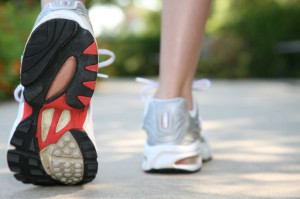
Choosing the right pair of running shoes is vital for runners of all levels, as it can impact performance and prevent injuries. Understanding the different categories of running shoes can help you find the perfect fit for your needs. First, there are neutral shoes, designed for runners with normal arches who require cushioning and support. Then, stability shoes are ideal for runners with mild to moderate overpronation, providing additional support to help stabilize the foot. For those with severe overpronation or flat feet, motion control shoes offer maximum stability and control to prevent excessive inward rolling of the foot. Additionally, minimalist shoes provide a barefoot-like experience, promoting a natural running gait and strengthening foot muscles. Finally, maximalist shoes feature extra cushioning to absorb impact, making them suitable for long distance runners or those prone to joint pain. By understanding these categories and considering factors, such as foot type and running style, you can find the perfect pair of running shoes to support your fitness goals. If you have developed foot conditions from wearing the wrong type of shoes, it is suggested that you consult a podiatrist who can treat your specific foot ailment, and guide you on the right type of running shoes to purchase.
If you are a runner, wearing the right running shoe is essential. For more information, contact one of our podiatrists from Carolina Foot & Ankle Specialists. Our doctors can provide the care you need to keep you pain-free and on your feet.
Choosing the Right Running Shoe for Your Foot Type
To increase performance and avoid the risk of injury, it is important to choose the right running shoe based on your foot type. The general design of running shoes revolves around pronation, which is how the ankle rolls from outside to inside when the foot strikes the ground.
- Neutral runners are able to choose from a wide variety of shoes, including minimalist shoes or even going barefoot.
- Runners who overpronate, or experience an over-abundance of ankle rolling, should choose shoes that provide extra motion control and stability.
- Runners who underpronate, or supinate, have feet that have high arches and lack flexibility, preventing shock absorption. They require shoes with more flexibility and cushion.
If you have any questions please feel free to contact our offices located in Mount Pleasant and Charleston, SC . We offer the newest diagnostic and treatment technologies for all your foot and ankle needs.
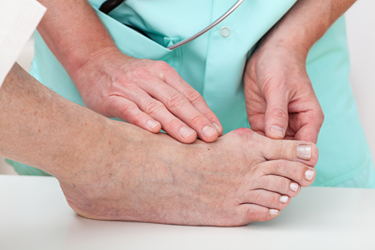
Bunions, medically known as hallux valgus, are a foot deformity that affects the joint at the base of the big toe. This condition occurs when the bone or tissue at the joint shifts out of place, causing the big toe to lean inward toward the other toes. The anatomy of a bunion involves the misalignment of the metatarsophalangeal, known as the MTP, joint that leads to a bony bump on the side of the foot and the deviation of the big toe. Several factors contribute to the development of bunions, including genetics, improper footwear, and structural foot abnormalities. Individuals with a family history of bunions are more predisposed to developing them, as are those who frequently wear tight or narrow shoes that squeeze the toes together. Additionally, conditions, such as flat feet or low arches, can increase the risk of bunions by placing excessive pressure on the MTP joint. Understanding the anatomy and causes of bunions is helpful for effective prevention and treatment strategies. If you have a bunion, it is suggested that you consult a podiatrist who can offer you effective management techniques.
If you are suffering from bunions, contact one of our podiatrists of Carolina Foot & Ankle Specialists. Our doctors can provide the care you need to keep you pain-free and on your feet.
What Is a Bunion?
A bunion is formed of swollen tissue or an enlargement of boney growth, usually located at the base joint of the toe that connects to the foot. The swelling occurs due to the bones in the big toe shifting inward, which impacts the other toes of the foot. This causes the area around the base of the big toe to become inflamed and painful.
Why Do Bunions Form?
Genetics – Susceptibility to bunions are often hereditary
Stress on the feet – Poorly fitted and uncomfortable footwear that places stress on feet, such as heels, can worsen existing bunions
How Are Bunions Diagnosed?
Doctors often perform two tests – blood tests and x-rays – when trying to diagnose bunions, especially in the early stages of development. Blood tests help determine if the foot pain is being caused by something else, such as arthritis, while x-rays provide a clear picture of your bone structure to your doctor.
How Are Bunions Treated?
- Refrain from wearing heels or similar shoes that cause discomfort
- Select wider shoes that can provide more comfort and reduce pain
- Anti-inflammatory and pain management drugs
- Orthotics or foot inserts
- Surgery
If you have any questions, please feel free to contact our offices located in Mount Pleasant and Charleston, SC . We offer the newest diagnostic and treatment technologies for all your foot care needs.
Blog Archives
- 2025
- 2024
- 2023
- 2022




